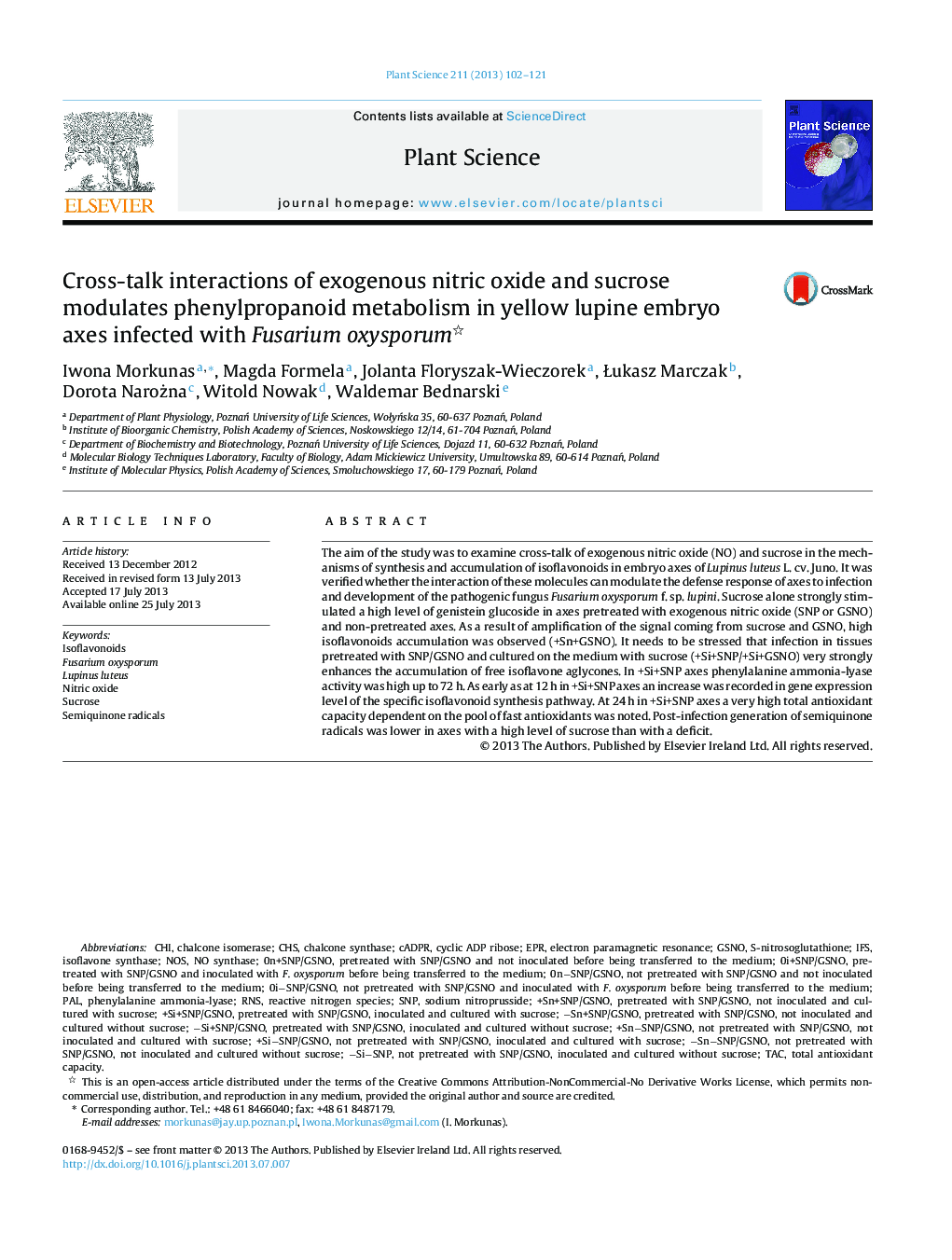| Article ID | Journal | Published Year | Pages | File Type |
|---|---|---|---|---|
| 8358622 | Plant Science | 2013 | 20 Pages |
Abstract
The aim of the study was to examine cross-talk of exogenous nitric oxide (NO) and sucrose in the mechanisms of synthesis and accumulation of isoflavonoids in embryo axes of Lupinus luteus L. cv. Juno. It was verified whether the interaction of these molecules can modulate the defense response of axes to infection and development of the pathogenic fungus Fusarium oxysporum f. sp. lupini. Sucrose alone strongly stimulated a high level of genistein glucoside in axes pretreated with exogenous nitric oxide (SNP or GSNO) and non-pretreated axes. As a result of amplification of the signal coming from sucrose and GSNO, high isoflavonoids accumulation was observed (+Sn+GSNO). It needs to be stressed that infection in tissues pretreated with SNP/GSNO and cultured on the medium with sucrose (+Si+SNP/+Si+GSNO) very strongly enhances the accumulation of free isoflavone aglycones. In +Si+SNP axes phenylalanine ammonia-lyase activity was high up to 72Â h. As early as at 12Â h in +Si+SNP axes an increase was recorded in gene expression level of the specific isoflavonoid synthesis pathway. At 24Â h in +Si+SNP axes a very high total antioxidant capacity dependent on the pool of fast antioxidants was noted. Post-infection generation of semiquinone radicals was lower in axes with a high level of sucrose than with a deficit.
Keywords
cyclic ADP riboseNOSRNSNO synthaseFusarium oxysporumTACPALcADPRCHSGSNOCHIS-nitrosoglutathioneIFSLupinus luteusisoflavone synthaseIsoflavonoidsEPRElectron paramagnetic resonanceSemiquinone radicalsSucrosechalcone synthaseTotal antioxidant capacityphenylalanine ammonia-lyasesodium nitroprussideNitric oxideSNPchalcone isomerasereactive nitrogen species
Related Topics
Life Sciences
Agricultural and Biological Sciences
Plant Science
Authors
Iwona Morkunas, Magda Formela, Jolanta Floryszak-Wieczorek, Åukasz Marczak, Dorota Narożna, Witold Nowak, Waldemar Bednarski,
